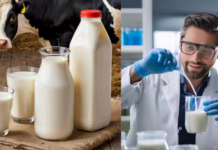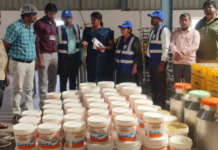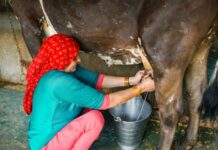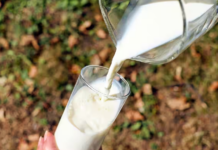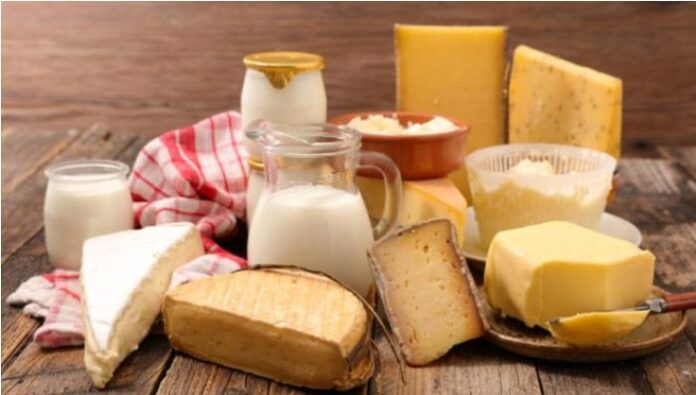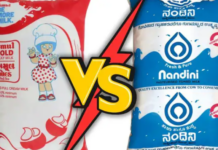New Delhi, January 20, 2022: Two audits recently released by the European Commission’s health and safety agency have assessed the safety of milk and dairy products in Romania and Finland. Several problems were found.
The first remote DG Sante audit, in December 2020 in Romania, found the official control system was comprehensive but there were some issues with lab testing and enforcement.
Dairy sites are registered based on their commercial activities: most “non-professional” holdings are not subject to official controls because they are not considered to be involved in national trade of dairy products. However, they do provide raw milk to approved processing plants.
The network of accredited official laboratories has not been assessed by the central authority because of other priorities or a lack of budget. In 2020, nine inspections were planned but only one had been carried out because of a lack of financial resources. Another was done at a lab, following a complaint from a client. At private labs, none of the 15 planned inspections were undertaken but five unplanned controls were done after customer complaints.
Issues with the methods used, results obtained, poor participation rate and outcomes of inter-laboratory proficiency tests by private and food businesses’ in-house labs means results may not be reliable and may not guarantee milk is safe to consume, according to the report.
Results of tests in the County Sanitary Veterinary and Food Safety Laboratories showed a significant number of non-compliant somatic cell and plate count samples; while very few to no unsatisfactory results were obtained by private and in-house labs, who had tested more samples.
Re-labeling confusion
Controls on raw milk criteria at sheep, goat and buffalo farms are limited as priority has been given to the cow milk sector. Frequency of sampling was sometimes lower than required in EU legislation. Romanian authorities have since issued instructions to check raw milk criteria from all relevant species.
At the time of the audit, 158 dairy processing establishments were approved with 25 suspended. Evidence provided to the audit team showed that enforcement measures do not always match the severity of a non-compliance, or are not increased after repeated problems. In some cases, the food business had not properly addressed deficiencies according to the reports published in foodsafetynews.com.
Domestic laws for the use of raw cow’s milk that was not compliant with plate count criteria, direct sale of foodstuffs, and the manufacture of traditional products, were not notified to the EU Commission and member states, contrary to the rules. Romanian officials committed to do this by March 2022 and get rid of a rectangular identification mark used on certain dairy products.
Checks in 2020 on fraud focused on labeling of dairy products at the retail level. One county detected six non-compliances in 36 controls. The main issue was cheese made with sheep and cow’s milk sold as cheese manufactured with sheep milk only. Further investigations found products were correctly labeled by the manufacturer but were later relabeled by the retailer, therefore misleading consumers.
Finland findings
The second virtual audit, in April 2021 in Finland, praised the raw milk quality and lab network but identified a number of weaknesses within the control system.
Several regional and local officials said they lack resources to do controls on dairy hygiene and often have to prioritize checks on other topics such as animal welfare. A shortage of training was also noticed by the audit team.
A change of IT systems has resulted in restricted access and information gaps between local, regional and central agencies as well as problems transferring information from old databases.
Auditors found central and regional authorities have no powers to influence controls on dairy hygiene, which are carried out by local authorities and do not have access to local sampling plans so cannot monitor implementation. The central authority also only has limited oversight to verify the effectiveness, consistency and uniformity of official controls, which is required by EU law.
Too lenient?
Dairy co-operatives responsible for collecting and transport of raw milk are not included in official controls and the level of cooperation with authorities varies. The audit team examined one dairy holding report of a milk collection co-operative that had several shortcomings on milking hygiene.
Controls of dairy establishments use smileys for the different topics to be checked. The system has a goal that on average 85 percent of food firms should be in category A for excellent and B for good and this target has been reached in the past three years.
However, a review by the audit team of several inspection reports suggests scores are often too lenient and inspectors are hesitating to take enforcement action. This means results do not accurately reflect the nature or severity of detected non-compliances.
In one example, a company detected Listeria monocytogenes twice in drain samples, including one in a production area in October 2020. It did not take a sample of the dairy product made after the last positive test. Despite this, and asking the firm to provide an action plan with a deadline of two weeks, Listeria own controls were rated excellent. The next two inspection reports did not mention if the plan had been provided.
Authorities said avoiding re-inspections obligatory for C and D scores due to staff shortages, prioritization of other tasks, a lack of experience in doing controls and training were the main reasons for the leniency.



